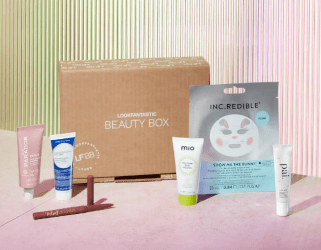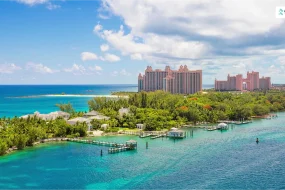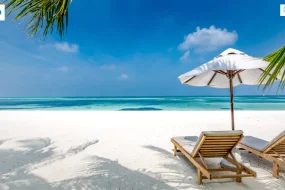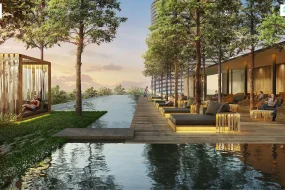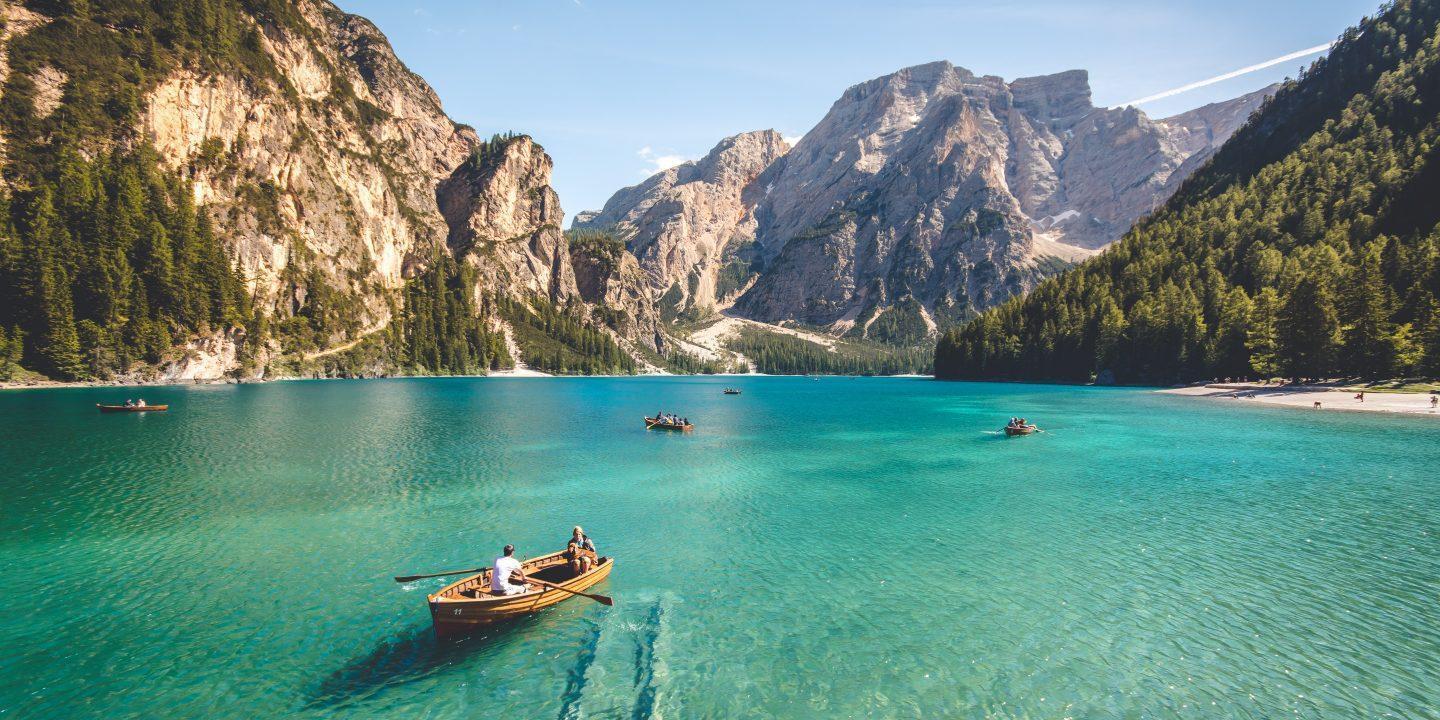
You may not think of yourself as being a small business owner, but when you own a vacation rental, you’re in the tourism industry. And as a tourism business, you need to get strategic with your marketing.
The first step to better marketing? Better VRBO listings. It’s how most of your future guests will find you, which means it must be fine-tuned to turn heads and open wallets.
To grow your burgeoning vacation rental business, here are 10 ways to improve your VRBO listings for maximum bookings and profits.
1. Accrue Reviews ASAP
Most guests shy away from listings with few or no reviews. Reaching a critical mass of reviews is a barrier to entry on Airbnb, and it’s one you need to break through as quickly as possible.
You can do this in two ways. First, be sure to ask for reviews from guests. Many guests forget to leave a review, so it’s up to you to remind them.
In fact, ask for a review at least twice, starting with when you meet the guest to hand over the keys. Say something like, “It’s a new listing, and we haven’t had a chance to accumulate reviews yet, so it would mean the world to us if you left a positive review.”
If your entry process is automated, mention the review request when you send a message welcoming them to the unit or giving them access instructions.
Mention it a second time when arranging checkout, and then ask for it a third time after you leave a positive review for the guest. Send them a quick message saying, “We just left you a glowing review, thanks for being such a great guest. We’d really appreciate a positive review, as well. It makes a huge difference for our bookings!”
Of course, you need bookings in order to get reviews, which brings us to the second way to get them: pricing.
2. Price Competitively (Especially in the Beginning)
When you first list your property and have no reviews, your property is a greater risk for guests. It’s unverified by other travelers.
You need to compensate guests for that higher risk by offering better pricing than comparable properties with plenty of evaluations. As you accrue positive reviews, you can gradually raise your pricing. But in the beginning, you need to price in that higher risk for your customers if you want them to book your unit over your more established competitors.
3. Post Higher Quality Photos
Too many Airbnb hosts just snap a handful of photos with their phones and throw them online. Never mind that these hosts aren’t the Ansel Adams they think they are, or that half the photos are blurry, or that the angles make the rooms look small.
Shell out $100 to $200 for a professional real estate photographer to come shoot your unit properly. It’s a one-time cost, and these photos will serve you well for years to come. Remember, you’re in business, and this is a marketing expense.
Make sure they get multiple angles of each room, plus some shots of the front entrance and any outdoor living spaces, as well.
4. Post a Higher Quantity of Photos
I can’t tell you how many times I’ve been tempted to book a unit on Airbnb as a guest, only to hesitate because I can’t get a good sense for what the unit actually looks like.
Here’s a quick rule of thumb: post two photos from different angles for each of the main rooms in the house. Exceptions to this two-photo rule include half-bathrooms, walk-in closets, and other “not full” rooms.
Include at least one photo of the front entranceway to the building and at least two photos of outdoor living spaces (as applicable). If the block looks nice, include a photo of the block, making it obvious which property is yours.
You can include up to four photos of the neighborhood or nearby attractions. No more.
Your listing should have a bare minimum of a dozen interior photos, at least one or two exterior photos, and just a few photos of the surrounding area. When I see only a handful of interior photos and lots of local attraction photos, I immediately assume it’s a shoddy unit in a nice area.
If you really want to go above and beyond, include a floor plan of the unit. It makes a professional impression on prospective guests.
5. Always Show Bed Sizes for Each Bedroom
My wife and I refuse to share a bed smaller than a queen, as we both flail about in our sleep. And you can be sure that other prospective guests have their own quirks and standards when it comes to beds.
Airbnb lets you list the number and sizes of each bed in each bedroom. By entering those details, you make your listing more transparent and remove doubts among prospects like me, who want to know exactly what they’re getting.
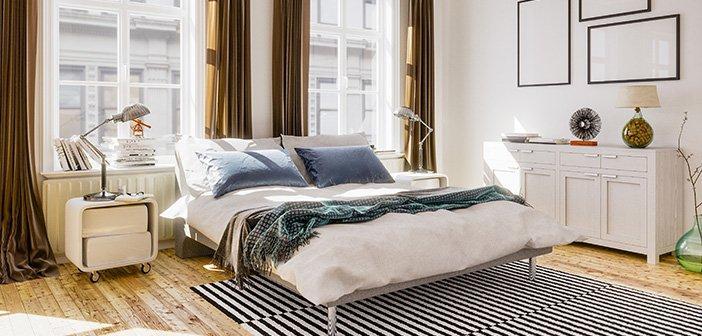
6. Optimize Your Listings for SEO
No, not Google SEO—although that doesn’t hurt either.
Airbnb has its own search algorithm to help prospects find appropriate units. You want yours to appear in as many searches as possible and as high on the results’ list as possible.
You can do this a few different ways. First, complete every… single… section of the Airbnb listing. No skipping, no exceptions. Fill each out completely.
Then invest some effort in optimizing the description. Mention each amenity that you offer. Yes, it’s a bit redundant since you already selected them in the “Amenities” section. Do it anyway.
Next mention all tourist-destination neighborhoods in the vicinity. Go on to mention specific tourist attractions, and indicate how far of a walk, bike ride, cab ride, or metro ride each is from your unit.
Keep in mind that Airbnb includes average response time in its search algorithm. The faster you respond to messages and requests, the higher you’ll appear in the results.
Be sure to use a few human-friendly words, as well, like “bright,” “airy,” charming,” “historic,” whatever. Don’t get carried away, but show off your unit in the best possible language.
7. Get Verified by Airbnb
Airbnb wants to promote transparency, and rightly so. One way they do this is by verifying hosts.
Go under the “Profile” menu to “Trust and Verification.” There, you can verify your email address, phone number, and identity, and you can connect your social media profiles, as well.
Verified host listings appear higher in Airbnb’s search rankings—one more way to boost your search visibility.
As a final thought, note that if you don’t have any reviews for your unit yet, you can get your friends and family members to provide references for you. These aren’t fake reviews; there’s a separate section for “References” under the “Profile” menu.
All of these things will help your listings rank higher in Airbnb searches.
8. Turn on Instant Book
Prospects and Airbnb’s search algorithm both prefer “Instant Book” properties. It helps your unit rank better, and it makes guests feel better about booking.
Just make sure your availability calendar is accurate before turning this feature on.

9. Show Off Family-Friendly & Pet-Friendly Features
Families and pet owners often have trouble finding quality accommodations on Airbnb. That makes them ripe demographics for targeting in your marketing, wouldn’t you say?
Highlight any features or amenities in your unit and/or property that make it especially child-friendly or pet-friendly. If you like, you can always charge a higher cleaning fee to compensate for any deeper cleaning required.
10. Automate the Check-In Process & Show Off Your Flexibility
Two birds, one stone: by automating your check-in procedure, you remove work for yourself and make it easier and more flexible for guests to check in at any time of day. On the same note, this makes it easier to check out quickly and efficiently.
You can use lockboxes, smart locks, combination locks, whatever. The exact method is up to you, and there’s no shortage of ideas floating around the good ol’ interwebs. But it should be hands-off for you and simple for the guest.
And when I say “simple,” I mean a six year old should be able to do it. That’s the attention span you’re working with for many of your guests.
If a six year old couldn’t access your unit, go back to the drawing board until it’s idiot-proof.
Final Thoughts
Vacation rentals can offer higher returns than long-term rentals—if you can secure high occupancy rates. And the key to high occupancy rates is marketing.
Never forget that you’re running a hospitality business. Invest time and effort in both forming your business plan (including your marketing) and treating each guest as a valued client. That is, in fact, what they are.
If you do that, your guests will leave positive reviews, and the more positive reviews you have, the greater your occupancy rates and profit margins will be.
It’s that simple.




